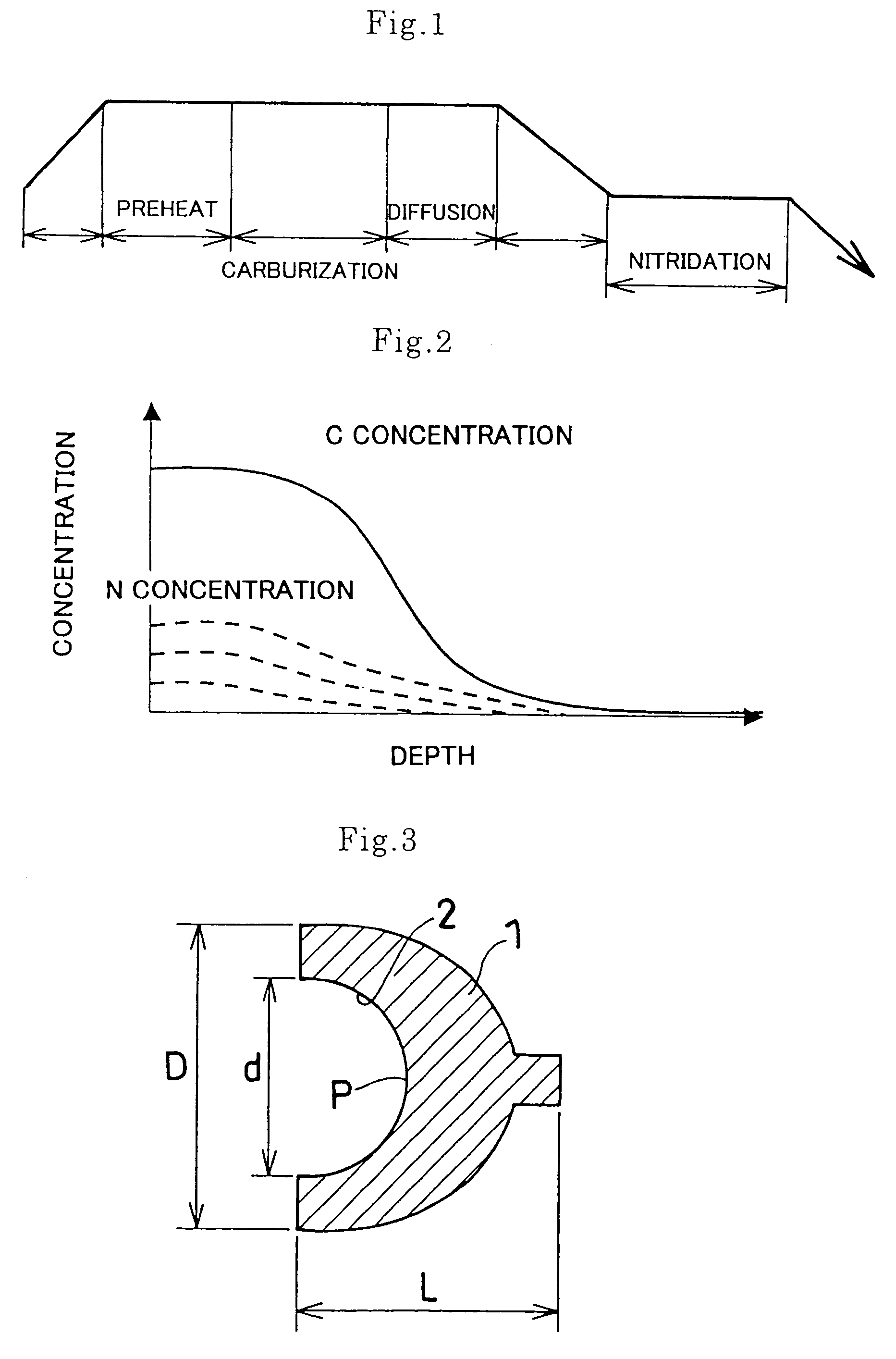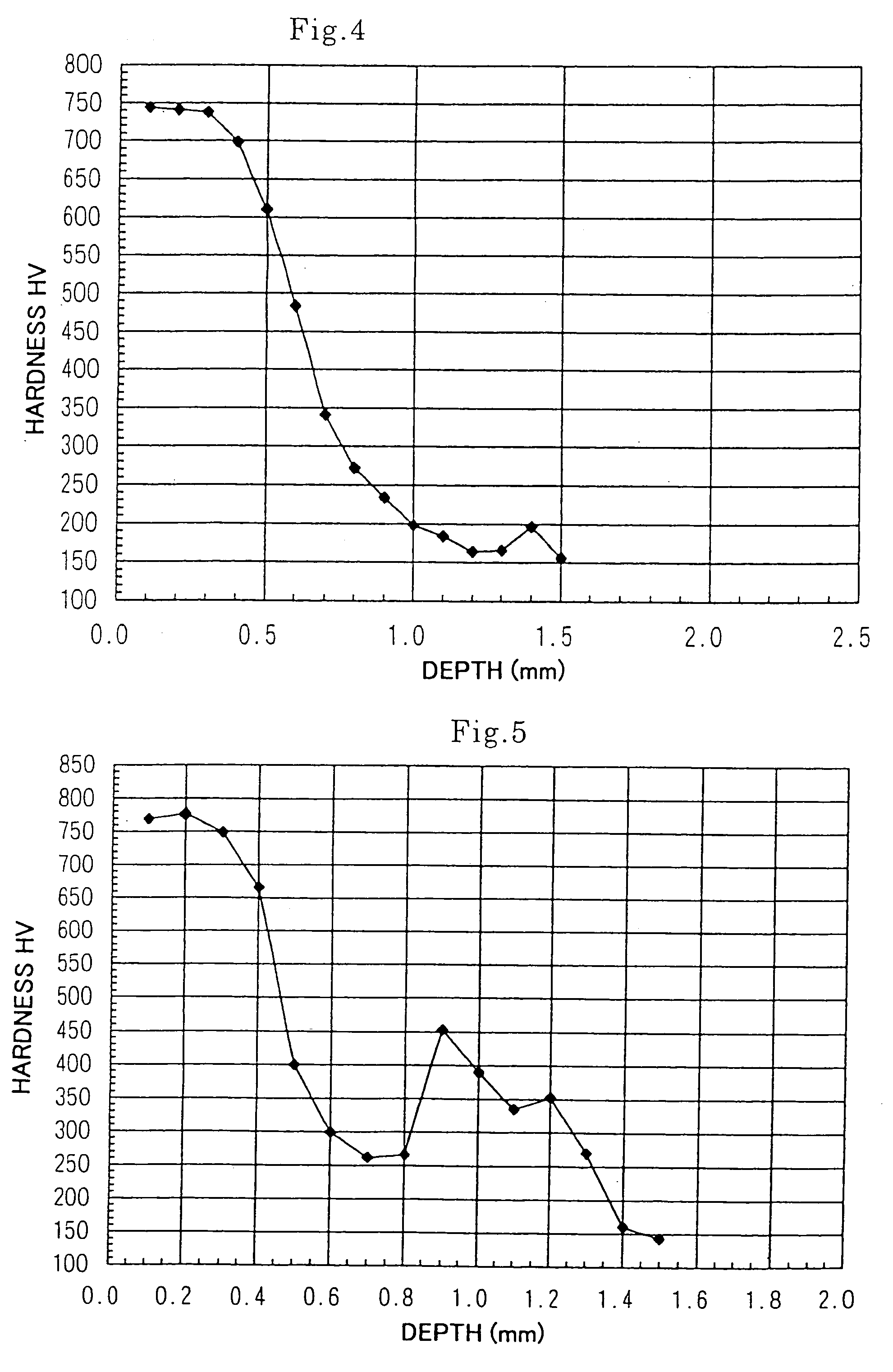Vacuum carbo-nitriding method
- Summary
- Abstract
- Description
- Claims
- Application Information
AI Technical Summary
Benefits of technology
Problems solved by technology
Method used
Image
Examples
example 1
[0027]A plurality of cup ends (1) were loaded in the lower basket of two baskets piled in such a manner that the opening of the recess (2) was directed downward, while a plurality of dummies were loaded in the upper basket of the two baskets piled. The baskets piled were then disposed in an effective heating space where uniformity of temperature was secured in a vacuum heat treating furnace. The total weight of the cup ends (1) was 17.5 kg, the total weight of the cup ends, dummies, baskets and tray was 75.5 kg.
[0028]Then after reducing the pressure of the interior of the vacuum heat treating furnace to 0.14 kPa or less over 8 minutes, the effective heating space in the furnace was heated to 930° C. over 14 minutes, and kept at this temperature for 40 minutes so as to perform a preheating process. Subsequent to the preheating process, a carburizing process was performed which involves keeping at 930° C. for 100 minutes under the pressure of 7 to 8 kPa while supplying the heat treati...
example 2
[0029]The vacuum carbonitriding process was performed on the cup ends (1) in the same manner as in Example 1 except that the nitriding time was changed to 120 minutes.
example 3
[0030]The vacuum carbonitriding process was performed on the cup ends (1) in the same manner as in Example 1 except that the nitriding time was changed to 60 minutes.
PUM
| Property | Measurement | Unit |
|---|---|---|
| Temperature | aaaaa | aaaaa |
| Pressure | aaaaa | aaaaa |
Abstract
Description
Claims
Application Information
 Login to View More
Login to View More - R&D
- Intellectual Property
- Life Sciences
- Materials
- Tech Scout
- Unparalleled Data Quality
- Higher Quality Content
- 60% Fewer Hallucinations
Browse by: Latest US Patents, China's latest patents, Technical Efficacy Thesaurus, Application Domain, Technology Topic, Popular Technical Reports.
© 2025 PatSnap. All rights reserved.Legal|Privacy policy|Modern Slavery Act Transparency Statement|Sitemap|About US| Contact US: help@patsnap.com



